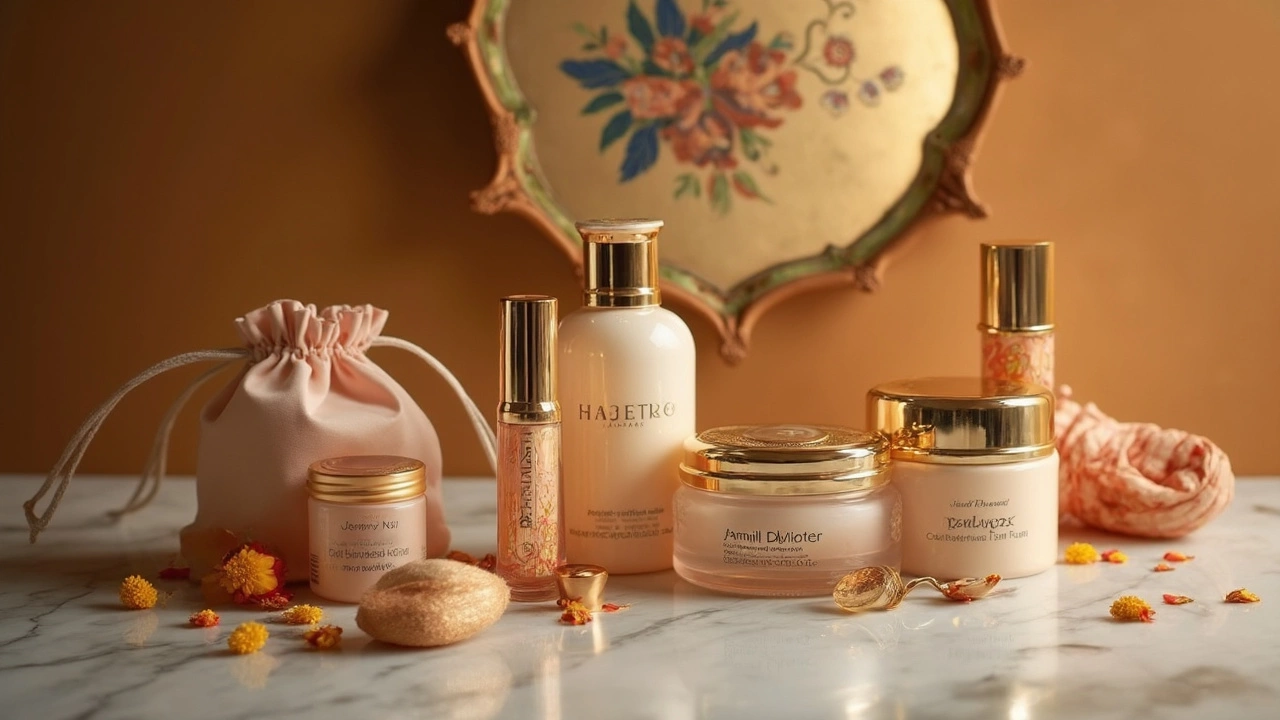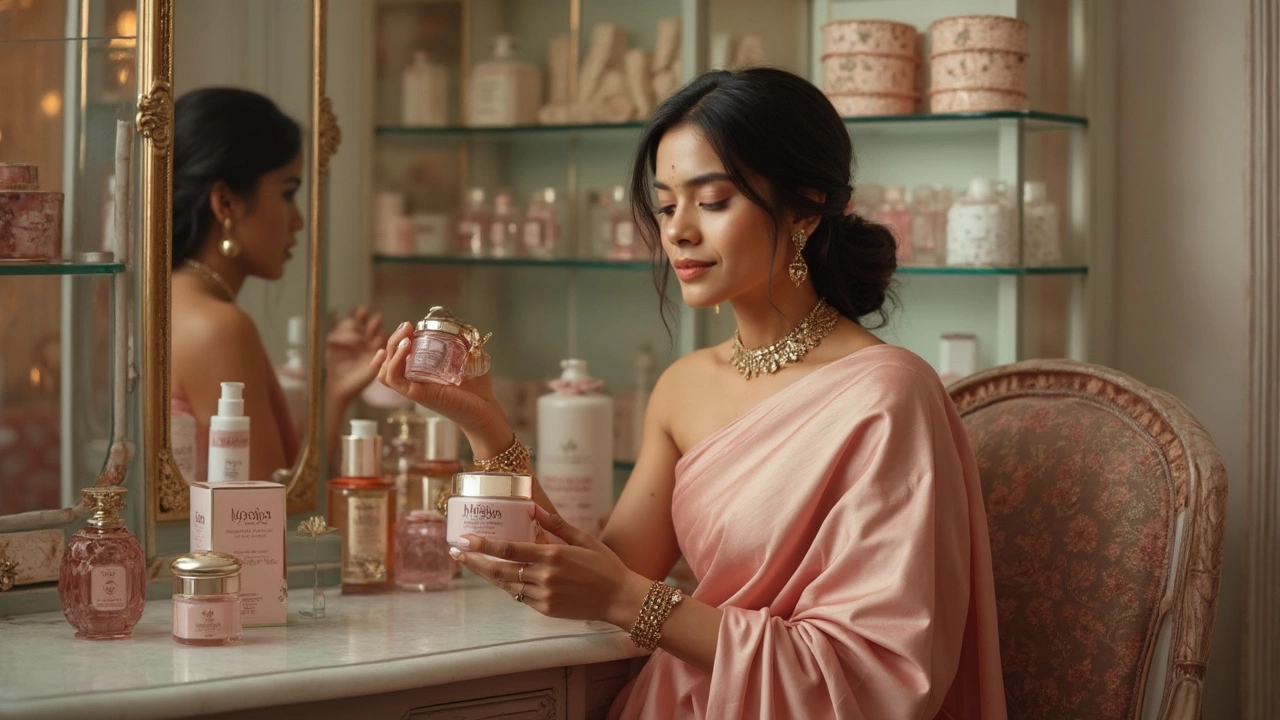
Imagine dropping as much on a single skincare product as you would on a designer handbag. Sounds wild, right? But that's exactly what happens at the top end of the beauty market. Some creams go for thousands of dollars—and yes, people actually buy them.
So, which skincare brand sits at the very peak of this pricey mountain? The one that consistently takes the crown is La Prairie, especially with its legendary Platinum Rare line. A tiny jar of their Platinum Rare Haute-Rejuvenation Cream can cost you over $1,500. The hype isn't just about the fancy packaging; it's the ultra-rare ingredients and the promise of ageless skin that really rack up the final bill.
But before swiping your card for a tiny jar, it's worth asking: What's really behind these sky-high prices? Is it magic in a bottle or just a seriously brilliant brand strategy? Let's dig into why some creams come with a luxury price tag, whether the ingredients are actually worth the splurge, and what you can do if you want a taste of luxury without emptying your savings.
- The Reigning Queen of Expensive Skincare
- What Makes These Products So Pricey?
- Do Luxury Ingredients Actually Work?
- Ways to Treat Yourself Without Breaking the Bank
The Reigning Queen of Expensive Skincare
When it comes to expensive skincare, La Prairie holds the trophy—no contest. Originally from Switzerland, this brand has made a name for itself with formulas that sound straight out of a sci-fi movie. Their most extravagant products? The Platinum Rare Collection. The face cream alone, the Platinum Rare Haute-Rejuvenation Cream, sells for over $1,500 in most countries. Some places charge even more, depending on taxes and import fees.
La Prairie is not just about slapping a shiny label on a basic moisturizer. The brand actually started as a medical clinic and then evolved into a high-end beauty powerhouse. They love telling stories about cutting-edge science and rare materials—the kind of stuff you definitely won’t find at the drugstore. Their Platinum Rare line claims to use real platinum, and yes, there’s real metal inside that jar. But let’s be honest, a big chunk of the price tag also comes from the sleek purple packaging and that whole vibe of exclusivity and luxury.
If you pull up VIP shopping guides or peep at what celebs use, you’ll see La Prairie all over the place. To give you an idea just how pricey they run, here’s a quick price comparison of some of their top products worldwide:
| La Prairie Product | Average Price (USD) |
|---|---|
| Platinum Rare Haute-Rejuvenation Cream (50ml) | $1,570 |
| Platinum Rare Cellular Life-Lotion (115ml) | $560 |
| Skin Caviar Luxe Cream (50ml) | $575 |
| White Caviar Illuminating Pearl Infusion (30ml) | $795 |
These numbers aren’t just hype—they’re what you’ll find at authorized stores. The bottom line? La Prairie isn’t just the most famous, it’s also the most expensive among luxury beauty brands right now—making it the gold standard (or in this case, the platinum standard) for big-budget luxury beauty.
What Makes These Products So Pricey?
If you've ever looked at the price tag on a luxury beauty product and blinked twice, you're not alone. High-end brands like La Prairie, La Mer, and even Sisley Paris don't just charge extra for fun—they do it because of a bunch of factors that actually drive those numbers way up.
First off, rare and hard-to-source ingredients play a massive role. La Prairie's Platinum Rare line? It literally includes platinum powder, which isn't something you find at the drugstore. La Mer's Crème de la Mer is famous for its "Miracle Broth," created with sea kelp and bio-fermented for months. These aren't your average moisturizers.
It's not just what's in the jar, but also all the science behind it. Many expensive skincare brands fund serious research and fancy technology. That means their creams, serums, and masks often feature cutting-edge delivery systems or patented complexes. It costs a lot to invent something totally new. The expenses add up fast.
Packaging is another huge chunk of the price. Ever notice how these products look like little works of art? Heavy glass jars, metallic details, and hand-finished boxes all add to production costs—and are designed to make you feel like you're buying something special.
Let's not forget marketing. Getting a big celebrity to endorse your product or flying editors around the globe for exclusive launches isn’t cheap. That budget is baked into the price you pay.
| Brand | Hero Product | Approx. Retail Price (USD) |
|---|---|---|
| La Prairie | Platinum Rare Haute-Rejuvenation Cream | $1,570 |
| La Mer | Genaissance de la Mer The Serum Essence | $760 |
| Sisley Paris | Supremÿa at Night | $795 |
When you shell out big bucks for the most expensive skincare products, you’re paying not just for the formula, but for the whole experience—the brand history, the rarity, the pampering, and even that influencer hype.

Do Luxury Ingredients Actually Work?
This is the real question, right? When you’re dropping serious cash on expensive skincare, you want something more than just a pretty bottle. High-end brands like La Prairie love to spotlight ingredients like platinum, caviar, gold, and rare plant extracts. But what do these luxury ingredients actually do for your skin?
Let’s talk platinum first. There’s no solid proof that platinum itself erases wrinkles, but it does work as an antioxidant, which helps protect skin from damage. Caviar is packed with fatty acids and vitamins that boost hydration and repair your skin’s protective barrier. Then you’ve got things like gold flakes, which look flashy but have little scientific backing outside of giving your skin a temporary glow.
Here’s a quick peek at what you’ll find in some of the world’s most luxury beauty products:
| Ingredient | Main Benefit | Realistic Result |
|---|---|---|
| Platinum | Antioxidant, skin protection | Reduces signs of early aging but not miracle-level changes |
| Caviar Extract | Hydration, nutrients | Improved moisture, healthier glow |
| Gold | Anti-inflammatory (claimed) | Temporary radiance, little long-term data |
Despite all the buzz, most dermatologists say the big difference isn’t always the ingredient—it’s the research, the texture, and how everything is formulated together. Many high-end brands invest big in clinical testing and use special packaging to keep things fresh and stable, which also drives up the price.
Of course, some tried-and-true basics like retinol and vitamin C are found in both luxury and budget products, sometimes with only minor tweaks. So while best skincare brands might bring you an amazing spa experience and a sense of pampering, the actual results can be pretty close to what you’d get from solid mid-tier products. If you’re tempted to splurge, check for studies or real reviews—not just front-row fashion week hype.
Ways to Treat Yourself Without Breaking the Bank
You don’t have to buy the most expensive skincare to enjoy some luxury in your routine. Lots of smart shoppers get the glow without maxing out their credit card. Here’s how you can jump in, too.
- Sample Sizes and Gift Sets: Need to try a high-end brand like La Prairie or La Mer, but can’t stomach the price? Look for travel-sized products or holiday gift sets. You get several smaller versions for a fraction of the full-size cost. You’ll find these online, at Sephora, Nordstrom, or even brand websites.
- Shop at Duty-Free or During Sales: Major stores and online shops run serious promotions around holidays like Black Friday or Mother’s Day. Sign up for brand newsletters to grab coupon codes and early sale access. Airports offer surprising deals in their duty-free shops, too.
- Focus on Key Ingredients: A lot of budget-friendly brands, like The Ordinary or CeraVe, use the same powerful ingredients—think hyaluronic acid, retinol, or niacinamide—as luxury products. Check the label, not just the logo.
- Try DIY Skincare: Some people mix their own masks at home using safe, tried-and-true ingredients like honey, aloe vera, and plain yogurt. It’s not just cheap, it’s fun, and you know exactly what’s going on your skin.
- Loyalty Programs Pay Off: Sign up for rewards programs at retailers like Sephora, Ulta, and Cult Beauty. You’ll rack up points, get birthday freebies, and score exclusive product samples.
Now check this out: According to a report by Statista in 2024, only about 8% of women in the US buy premium or luxury beauty goods at full price. Most wait for deals, bundles, or loyalty points to make it work.
| Tip | Estimated Savings (%) |
|---|---|
| Travel Sizes | 60-70% |
| Sales/Coupon Codes | 20-50% |
| Loyalty Rewards | Up to 100% (on selected freebies) |
Bottom line? You can still treat yourself with top-quality skincare brands—just do it smart, and let the mega-spenders pay for the packaging.
 Hair Care
Hair Care